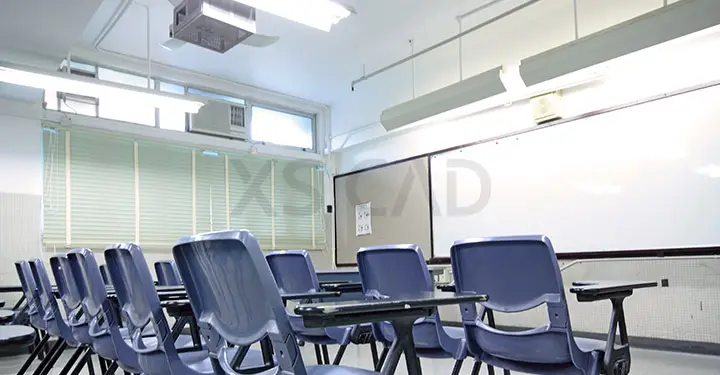Our Articles

MEP Design for Modern Schools and Universities Compared to 25 Years Ago
Right up until the mid-1990s, most schools and universities did not offer Internet and free Wi-Fi facilities to its students or accept class work sourced from the Internet. In fact, it was around 1996 that the Internet started to be offered commercially by satellite, making it available to a significantly large number of people without access to landlines. Facebook, YouTube and Twitter followed quickly, and the evolution of social media changed lives and lifestyles. It also changed the means and methods of education.
Schools today have integrated the use of computers, tablets and other ICT (information and communications technology) devices with intelligent best practices to enable Internet-based learning. These systems need to be cyber-secure, have constant power and be regularly upgraded. School budgets also need to take them into account. Sometimes, school buildings may require a certain degree of redesign to facilitate effective Internet-enabled education, which could well need high-quality MEP (mechanical, electrical, plumbing) design services.
Changes in Educational Facilities
Internet access became available for faculty and students in several settings, such as:

Glass Buildings
Another modern feature of schools and universities is glass buildings. Using glass in educational institutes, which was not a popular feature 25 years ago, can provide additional dining space, improve building aesthetics and transform dark, unused spaces into light and lively social and dining spaces.

It is important that MEP design services consider the use of glass in the building for its effect on heating and cooling loads.
Effective Use of Light
Studies on the effect of light on students show that bright spaces can have several benefits, such as students comprehending and thus learning faster and improving teacher morale. When school and university buildings bring in natural light effectively, it can significantly reduce energy costs through effective MEP engineering design.

Reducing Energy Costs
Modern architecture and MEP design services try to save energy costs in whichever way possible. Using glass or glazing in educational institutes has specific advantages.
Site Planning Exterior building surfaces receive 200 times more light than the amount of light required inside a classroom. In terms of energy costs, controlling the solar heat gain once it is inside will need artificial means, such as air conditioning. If the quantity of sunlight entering the classroom can be controlled by aligning rooms to face the south or by using other methods, daylight and heat gain can be used effectively, minimising artificial aids.

Energy-efficient Glazing Though natural light can be brought into a building through windows, glazed doors, skylights and other openings, these features can also bring in extra heat, if not planned correctly. Light shelves, interior reflective surfaces and interior shading devices can minimise solar heat gain. The visual and lighting benefits of glass can be optimised in a classroom setting when glass manufacturers produce tinted glass, reflective glass, low-e coatings and insulated glass. These products also help limit the heat entering inside. By using photovoltaic glazing in modern educational institutes, the glass can capture sunlight and convert it into electricity, while students enjoy the benefits of beautiful outside views and sufficient natural light.
See-through Walls Fire-rated technology has seen several advances. In today’s world, fire- and impact-resistant glazing can be used in certain areas of schools and colleges rather than masonry or other materials used 25 years ago. These areas can be:
- Lightwells
- Corridors
- Lobbies
- Stairwells
- Wall partitions
- Interior courtyards
These walls allow light through to spaces deep inside a school or college building, merging natural and artificial lighting, while saving energy, creating a sense of openness and enhancing personal safety.
Carbon Footprint
Traditional artificial lighting used decades ago generated large amounts of heat, and lighting and cooling devices ate up more than half of the electricity consumption in schools and colleges.
The LEED rating system was created by the US Green Building Council to reward the design and construction of durable, affordable and environmentally sound practices in buildings and spaces. Strategies to reach higher LEED ratings include improving energy efficiency using daylight effectively and using low-energy electric lighting. Schools and colleges can now earn LEED points by:

Other trends in educational campus design that were not seen 25 years ago deal with extracurricular activities and campus residential spaces. Colleges constructed now or existing colleges are seriously considering the benefits of new facilities or renovating existing facilities for student unions, dining spaces and dormitories or other types of campus residences. These new spaces are being created for multi-use purposes to enrich the campus experience.
Some of these trends in college campus design include providing:
The many changes that have taken place in schools and colleges over the years could not have been possible without adapting design and MEP services to facilitate these changes. As Building Information Modelling (BIM) became more widely used in MEP engineering design, a new set of services, BIM MEP services, was also being provided to construction firms building schools and colleges. Over the years, many firms required high-quality MEP design services to effect the new design requirements accurately. Timely and cost-effective mechanical engineering design services are now increasingly being sourced at offshore firms. These design partners are well qualified, reliable and well versed with the local codes and regulations of the areas where schools and colleges are coming up and are constantly learning to keep up with the changing trends.
XS CAD has valuable experience providing MEP design services for MEP engineers, building owners, and design consultants. Our range of services for structural, architectural and building engineering firms, such as consultants and contractors across the world, include BIM MEP services, MEP drafting, MEP modelling and MEP coordination. We create these models and drawings by using Revit, AutoCAD, Navisworks, Camel DIALux, and BIM 360 Design for cloud collaboration.

